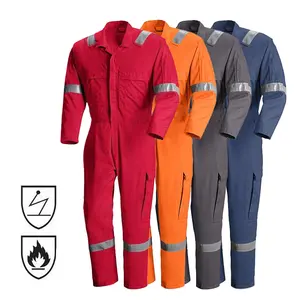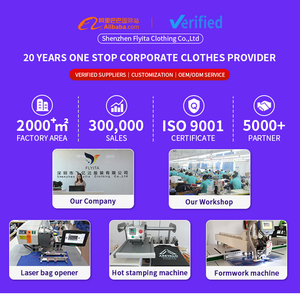
All categories
Featured selections
Trade Assurance
Buyer Central
Help Center
Get the app
Become a supplier

(19071 products available)

















































Corporate uniforms are clothing worn by employees of a corporation to represent their company and create a public image. They are formal and professional looking. They usually have the corporation’s logo or name on them. Corporate uniforms help identify employees, promote the corporation's brand, and create a professional and cohesive image. They can help give the workers a sense of belonging and also help them work together as a team. Here are some types of corporate uniforms.
This type of uniform consists of business professional clothing such as a suit and tie for men and a pantsuit or skirt suit for women. The suits are usually in solid colors such as navy blue, black, or charcoal grey. They are accompanied by a dress shirt or blouse in a complementary color. The exception is when the company logo is branded on the uniform. Then, it may be on the tie, scarf, or lapel. The shoes are usually dress shoes and must be polished and clean. The general idea is to have an attire that looks neat, elegant, and professional.
This type of corporate uniform is more relaxed than business formal but still professional. Depending on the company, it can include dress pants or chinos and a collared shirt such as a polo or button-down. Women can wear dress pants, skirts, or dresses paired with a blouse or sweater. The colors and patterns can be more varied than in business formal attire. The corporate logo is usually on the outerwear, such as blazers, sweaters, and cardigans. The shoes should be closed-toe and professional-looking, such as loafers or flats.
These uniforms are specific to certain corporations regardless of the nature of the business. Branded corporate uniforms include clothing with the company logo, name, or colors. It can be a simple t-shirt with the logo for a casual look or a tailored suit for a formal look. The key is the branding element. Other clothing items include caps, jackets, and aprons. They are usually given to employees to promote the company and create a cohesive look. They can help improve team spirit and make the employees feel part of the company.
Some corporate environments require uniforms that reflect the specific industry they operate in. For instance, healthcare professionals wear scrubs and patient care gowns that are comfortable and hygienic. The uniforms usually have colors that distinguish the wearers and create a sense of trust and professionalism. Employees in the hospitality industry wear attire that reflects warmth and service, such as tailored shirts and aprons. Corporate uniforms in the education sector include polo shirts and khaki pants, which are practical and professional. The uniforms are designed to meet the needs and standards of the specific industry.
These uniforms are designed for specific seasons or company events. For instance, summer uniforms may include lighter fabrics like cotton or linen to keep employees cool. They can include short-sleeved shirts and lightweight pants. Winter corporate uniforms may involve layering with sweaters and jackets in warmer fabrics like wool. Event-based uniforms are for conferences, trade shows, or company gatherings. They are selected to align with the event's theme or purpose. They help create a professional appearance that represents the company at specific times.
Corporate uniforms are designed with the intention of ensuring comfort and enhancing the productivity of the employees and meeting the company’s branding requirements. Here are the key elements of corporate uniform design:
Functionality
Functionality is a core design aspect of corporate uniforms. It ensures that they serve their intended purpose effectively. This involves considering the specific tasks and roles of employees who will be wearing the uniforms. For instance, uniforms for healthcare professionals need to be clean and comfortable. At the same time, they should be easy to wear for long hours, and those working in the hospitality industry require to have a more polished appearance. The design also incorporates practical elements such as pockets for carrying tools or accessories. Overall, functionality promotes a professional appearance and enhances the employees' efficiency and comfort.
Branding
Branding is a key design element in corporate uniforms. It incorporates visual cues that communicate the identity and values of a business. These include the use of logos. The company’s logo is often prominently displayed on uniforms. This enhances instant recognition and builds brand presence. Color schemes are another important branding element. Uniforms are designed with colors that are consistent with the company's branding. This evokes a sense of unity and professionalism. Additionally, they use patterns and custom accessories. They contribute to the overall brand image. Consistent branding in corporate uniforms fosters a sense of identity and enhances teamwork and customer trust.
Comfort
Comfort is a significant design element when creating corporate uniforms. It enhances the well-being and productivity of the employees. The use of high-quality and breathable fabrics such as cotton, linen, and blends contributes to improved comfort levels. Additionally, ergonomic design principles that accommodate different body shapes and allow for a range of motion ensure that uniforms fit well without being restrictive. Moisture-wicking technologies further enhance comfort by keeping employees dry and cool in case of stressful work conditions. Prioritizing comfort in corporate uniform design assists in reducing fatigue and discomfort. This promotes a positive work atmosphere and improves overall performance.
Sustainability
Incorporating sustainability in the design of corporate uniforms is a key aspect. It focuses on selecting eco-friendly materials. For instance, using organic cotton, recycled polyester, and biodegradable fabrics reduces the environmental impact. Sustainable design also considers the entire lifecycle of the uniform. This includes production processes that require low energy and water consumption. Additionally, designing for longevity and ease of care reduces the need for frequent replacements and harsh chemical cleaning agents. Further, incorporating circular economy principles. This allows for recycling or upcycling at the end of the life cycle. This promotes a holistic approach to sustainability that minimizes waste and environmental effects.
Here are some suggestions on how to wear and match corporate uniforms:
Matching the Uniform
The corporate uniforms should be matched in a way that the uniforms present a corporate and professional appearance. This may be accomplished by selecting uniforms that are clean, ironed, and fit properly. The tops and bottoms should complement each other in color and style. The appropriate accessories should be included in the uniform. This may include name tags, company logos, and badges. Footwear should be appropriate for the job and must be comfortable and stylish. The overall appearance should reflect the company’s brand and values. The uniforms should be kept in good condition and replaced when necessary. Continuous training on how to wear and match the uniforms is important. This ensures the employees understand the requirements. Regular feedback and assessments are conducted to ensure the uniforms meet the corporate standards.
Wearing the Corporate Uniforms
Wearing corporate uniforms requires attention to detail and adherence to specific guidelines to ensure a professional appearance. First, the uniforms should be clean, ironed, and well-fitted. This promotes a positive perception of the business. Employees should understand their roles in selecting the correct components of the uniform. This may include shirts, pants, skirts, blouses, and jackets. In some cases, accessories may be part of the corporate wear. The uniforms should be worn with appropriate footwear. These are comfortable and suitable for the job. The uniforms should be used in conjunction with personal hygiene and grooming standards. This promotes a neat and professional image. Employees should be trained on how to wear the uniforms. This enhances teamwork and consistency in presenting the business to clients and the public.
Q1: How do corporate uniforms benefit a company's branding efforts?
A1: Corporate uniforms contribute significantly to branding by creating a cohesive and recognizable brand image. They can incorporate brand colors, logos, and other identifiable elements, which help in establishing brand identity. This consistent representation of the brand fosters brand recognition and recall among customers, leading to a stronger brand presence in the market. Additionally, well-designed uniforms can convey professionalism and quality, enhancing the overall perception of the brand.
Q2: What is the significance of choosing the right fabric for corporate uniforms?
A2: Selecting the appropriate fabric for corporate uniforms is crucial for ensuring comfort, durability, and functionality. Different fabrics offer varying levels of breathability, flexibility, and moisture-wicking properties, which can impact the comfort of employees, especially in physically demanding roles or varying climates. Moreover, some fabrics are more resilient and easier to maintain, which is essential for uniforms that need to withstand daily wear and tear. The right fabric choice enhances employee comfort and contributes to the uniform's longevity and overall appearance.
Q3: How can companies ensure inclusivity in their corporate uniform policy?
A3: To foster inclusivity in corporate uniform policies, organizations should consider diverse cultural, religious, and gender identities among their workforce. This may involve offering a range of uniform options that accommodate different preferences and requirements, such as culturally appropriate attire or gender-neutral options. Engaging employees in the uniform selection process and seeking their feedback can also help identify potential barriers to inclusivity. Additionally, companies should communicate their commitment to diversity and inclusion clearly and ensure that uniform policies are flexible and accommodating to various needs.
Q4: What are the trends in sustainable corporate uniforms?
A4: Current trends in sustainable corporate uniforms include the use of eco-friendly fabrics such as organic cotton, recycled polyester, and Tencel. Additionally, companies are adopting circular fashion principles, designing uniforms for longevity, and facilitating take-back programs for recycling at the end of their lifecycle. Customization and personalization through digital printing and embroidery are also on the rise, allowing for unique branding while maintaining sustainability. Overall, there is a growing emphasis on reducing the carbon footprint and promoting ethical sourcing in corporate uniform production.